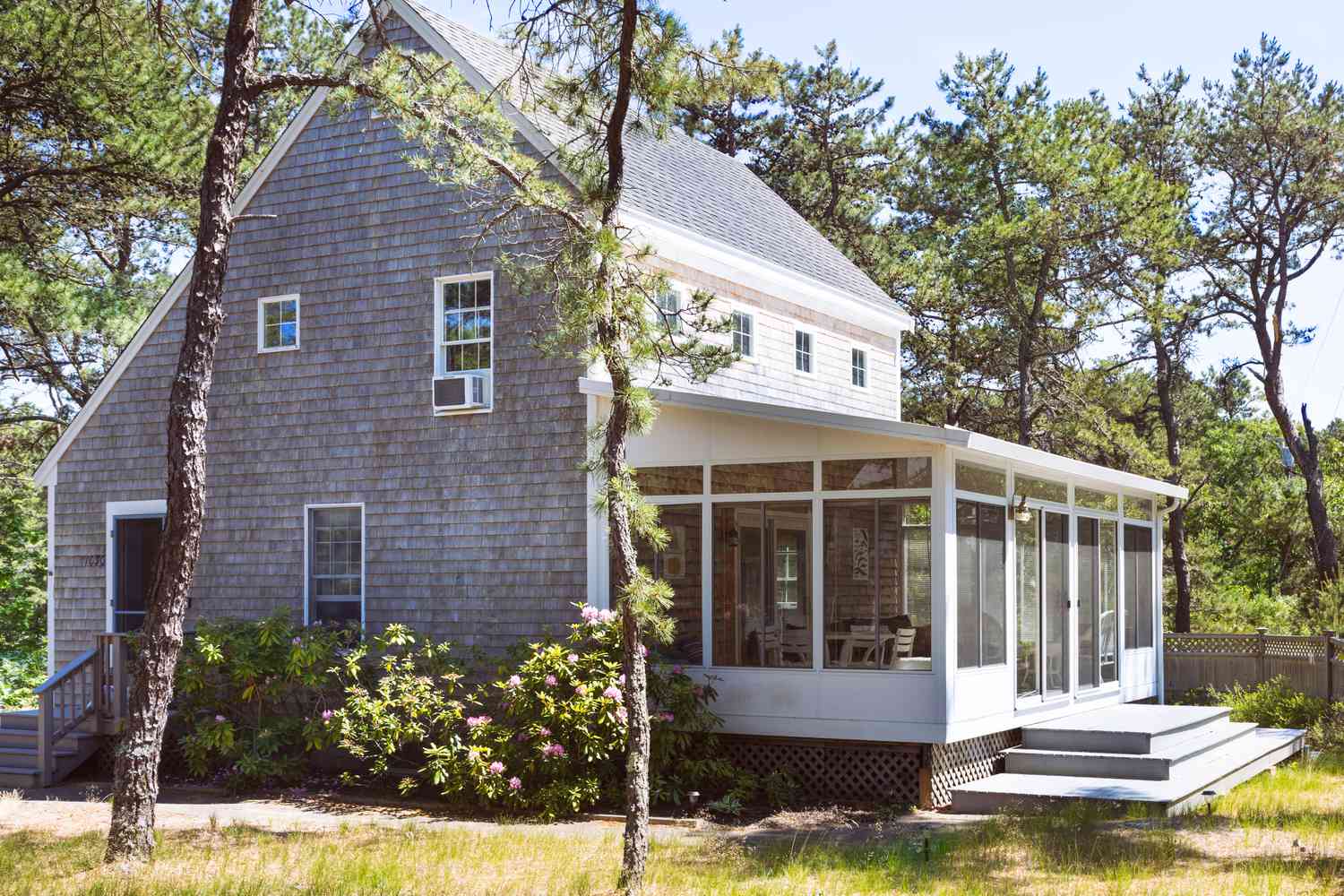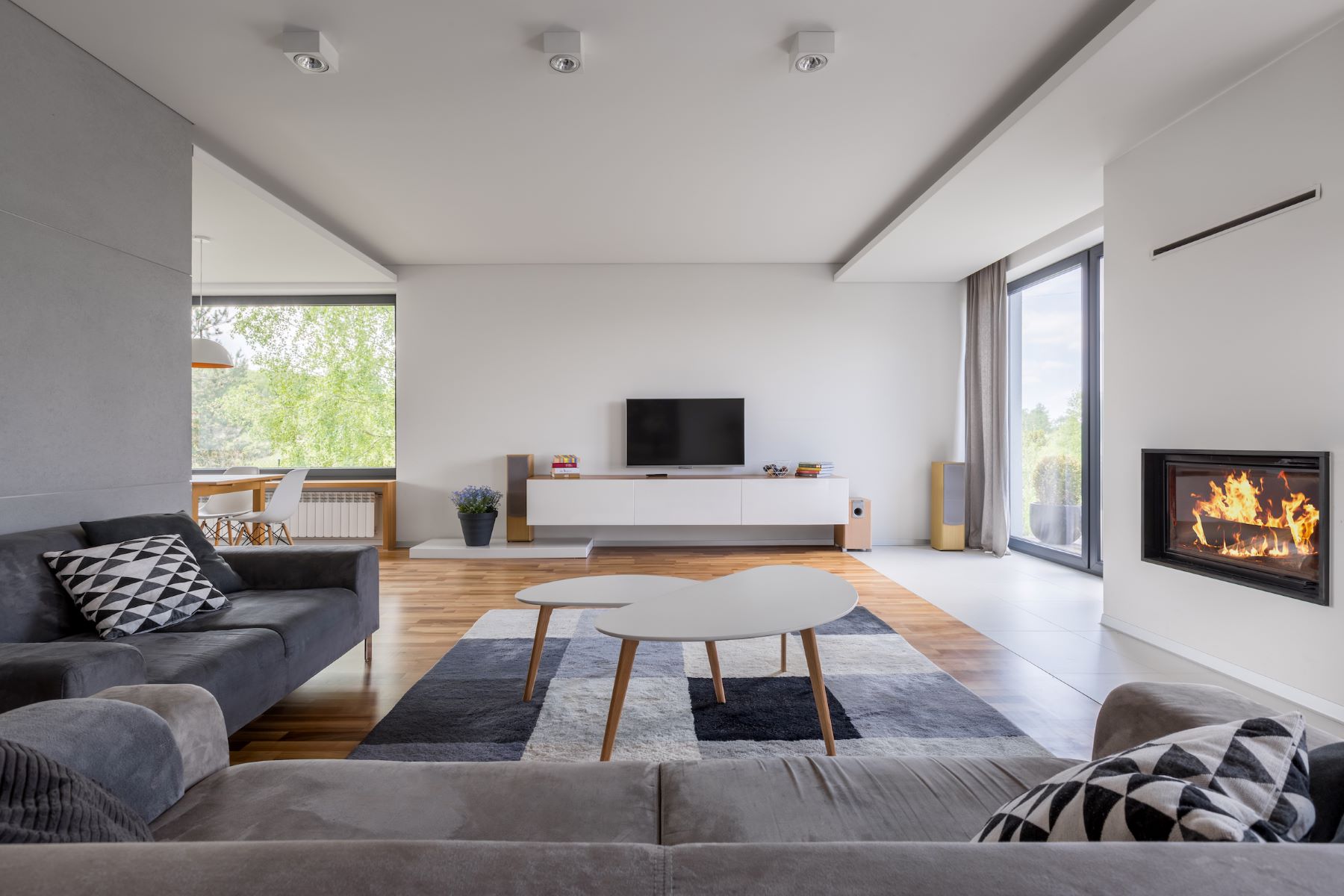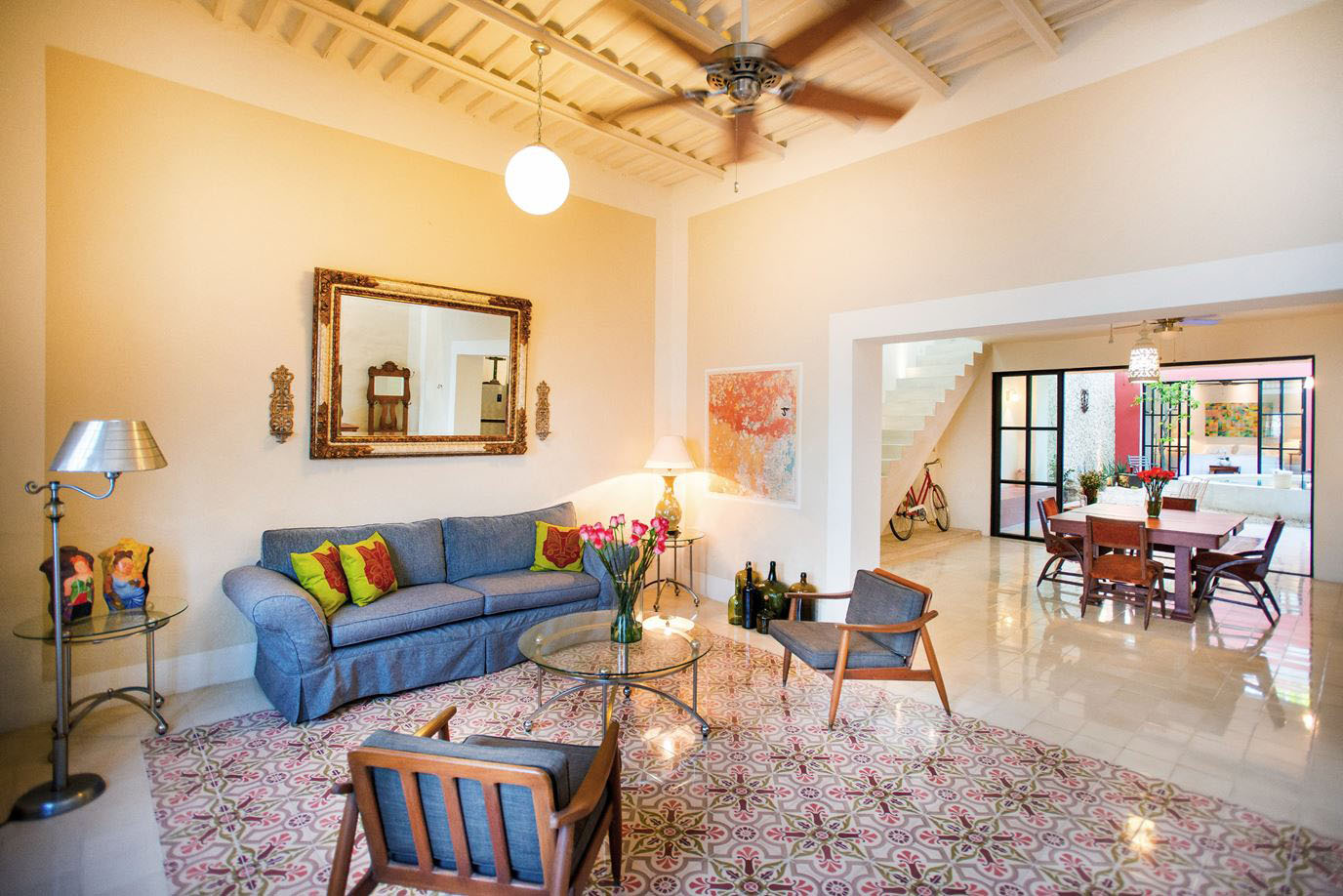Home>Articles>The History Behind The Saltbox House And Its Unique Roofline


Articles
The History Behind The Saltbox House And Its Unique Roofline
Modified: August 17, 2024
Discover the fascinating history of the saltbox house, known for its distinctive roofline. Get insights and information in our articles.
(Many of the links in this article redirect to a specific reviewed product. Your purchase of these products through affiliate links helps to generate commission for Storables.com, at no extra cost. Learn more)
Introduction
The Saltbox house is an architectural style that originated in Colonial New England and is characterized by its distinctive roofline, which slopes down at an angle in the shape of a saltbox container. This unique design has intrigued and captivated architects, historians, and homeowners for centuries, contributing to the charm and character of many historic neighborhoods.
The origins of the Saltbox house can be traced back to the early colonial period in New England. As settlers arrived from Europe, they brought with them a variety of architectural styles and influences. The Saltbox house, with its practical design and economical use of materials, quickly gained popularity among the early settlers. Its simple and efficient layout made it an ideal choice for the harsh New England climate.
Early examples of Saltbox houses can be found throughout Colonial New England, particularly in Connecticut, Massachusetts, and Rhode Island. These houses were typically built using local materials, such as timber for the frame and hand-split shingles for the exterior walls. The design often featured a central chimney, which provided heating for the entire house.
The Saltbox house design was also influenced by Dutch architecture, particularly the “steile” or “stool” roof often seen in houses in the Netherlands. Dutch settlers in New York and New Jersey introduced these roof designs to the colonies, where they were adapted and modified to suit the local conditions.
Key Takeaways:
- The Saltbox house, with its iconic sloping roofline, reflects the resourcefulness and adaptability of early New England settlers. Its unique design not only adds visual charm but also serves practical functions in combating harsh weather conditions.
- Preserving and restoring Saltbox houses is essential for safeguarding our architectural heritage and connecting with the stories of our ancestors. Balancing historical accuracy with modern comfort requires thorough research and expert consultation.
Read more: What Is Behind Siding On A House
Origins of the Saltbox House
The Saltbox house, with its iconic roofline, has its origins rooted in the early colonial period of New England. The name “Saltbox” originates from its resemblance to a wooden box used to store salt, with its sloping roof resembling the lid of the box.
The design of the Saltbox house was primarily driven by practicality and the need to adapt to the challenging environment of New England. The sloping roof, with its extended back section, provided a solution to combat the heavy snowfall prevalent in the region.
One theory suggests that the design may have originated from English post-medieval houses. In these houses, the back extension of the roof added extra space on the second floor, accommodating additional bedrooms or storage areas.
Another theory relates the Saltbox house’s design to the widespread use of a lean-to structure that served as an addition to existing houses. The lean-to typically had a sloping roof, which inspired the design of the Saltbox.
During the colonial era, construction materials were limited and expensive. The Saltbox design efficiently utilized these resources by minimizing the amount of timber required for the back extension, while still providing ample living space on the second floor.
The Saltbox house also adopted architectural elements from the English tradition, such as the central chimney. This design allowed for efficient heating throughout the house and provided a focal point for family activities.
Overall, the Saltbox house emerged as a practical and cost-effective housing solution for the early settlers of New England. Its unique roofline not only served a functional purpose but also became synonymous with the region’s architectural heritage.
Early Examples of Saltbox Houses
The Saltbox house style flourished in Colonial New England and left a lasting architectural legacy. The design spread throughout the region, particularly in states like Connecticut, Massachusetts, and Rhode Island, where a rich concentration of historic Saltbox houses can still be found today.
Colonial New England Saltbox houses typically featured a two-story structure with a sloping roof that extended down the backside of the house, resembling the shape of a saltbox container. These houses were constructed using local materials, such as timber framing and hand-split wooden shingles for the exterior walls.
One distinguishing feature of early Saltbox houses in Colonial New England was the central chimney. The chimney provided heat throughout the house and served as the focal point for daily activities, such as cooking and gathering around the hearth.
The Dutch influence on Saltbox house design can be seen in the areas with a significant Dutch settlement, such as New York and New Jersey. The Dutch introduced their own architectural styles, such as the “steile” or “stool” roof, which featured a steep slope on one side. This roof design inspired the modified Saltbox roofline seen in these regions.
In Dutch-influenced Saltbox houses, the front facade often featured Dutch-style stepped gables, adding a unique decorative element to the overall design. These houses were built using locally available materials, including brick and stone for the lower portions, and timber framing for the upper levels.
The Dutch influence extended beyond the roofline and gables. Dutch Saltbox houses often featured large windows, known as “belvederes,” which provided abundant natural light to the interior spaces.
Overall, the early examples of Saltbox houses in Colonial New England and the Dutch-influenced areas not only reflected the practical needs of the settlers but also incorporated distinctive architectural elements that showcased the region’s history and cultural influences.
The Unique Roofline of Saltbox Houses
The defining feature of the Saltbox house is its distinctive roofline, which sets it apart from other architectural styles. The sloping roof, with its extended back section, gives the house its characteristic shape and provides both design and functional advantages.
The design and functionality of the Saltbox roofline are closely intertwined. The slope of the roof serves an important purpose in areas with heavy snowfall, such as New England. By allowing snow to slide off easily, the roof prevents excessive weight accumulation and reduces the risk of structural damage.
Additionally, the steep slope of the roof allows for better drainage during rainfall, helping to keep the house dry and preventing water damage. The extended back section of the roof provides added protection to the rear of the house, shielding it from wind and rain.
Construction techniques used in building Saltbox houses were influenced by the available resources and the need for durability. Timber framing was commonly used for the skeleton of the house, providing strength and stability. The framing was often held together using mortise and tenon joints, which allowed for flexibility and ease of construction.
The exterior walls of Saltbox houses were typically made from hand-split wooden shingles. These shingles were cut from logs using a froe, a tool specifically designed for this purpose. The shingles were overlapped, creating a tight barrier against harsh weather conditions and allowing for better insulation.
The central chimney, a notable feature of many Saltbox houses, was constructed using bricks or stones. It provided a means of heating the entire house, with fireplaces on both floors connected to the chimney. The chimney also acted as a structural support, helping to stabilize the house.
Windows in Saltbox houses were strategically positioned to take advantage of natural light. Small, vertically aligned windows were commonly found on the front facade, while larger windows were placed at the back, providing a view of the surrounding landscape.
In summary, the unique roofline of Saltbox houses not only adds to their aesthetic charm but also serves important design and functional purposes. The construction techniques used in building Saltbox houses focused on durability and practicality, using locally available materials to withstand the harsh New England climate.
When researching the history of the saltbox house, be sure to explore its origins in colonial New England and how its unique roofline was designed to maximize space and shed snow.
Evolution of Saltbox Houses
The Saltbox house style has evolved over time, adapting to changing architectural trends and regional influences. From its humble beginnings in Colonial New England, the Saltbox design has undergone transformations that reflect the diverse architectural history of different regions.
As architectural styles shifted, so did the Saltbox houses. In the late 18th century, the Federal style emerged, bringing with it a departure from the symmetrical and simplistic designs of Colonial New England. Saltbox houses began to incorporate Federal-style details, such as decorative moldings, elaborate doorways, and proportioned windows.
With the rise of the Greek Revival movement in the early 19th century, Saltbox houses were further influenced by classical elements. These houses featured gable-ended roofs, often adorned with ornate cornices and pediments. The shape of the Saltbox roof was still retained, but the overall aesthetic became more refined and neoclassical in nature.
Regional variations in Saltbox house design are notable and reflect the specific architectural traditions of different areas. In Connecticut, for example, Saltbox houses often featured a one-and-a-half-story design, with the lower level serving as storage or workspace. This variation allowed for a more efficient use of space and catered to the needs of the agricultural communities.
In coastal regions of New England, such as Cape Cod, Saltbox houses incorporated elements of the Cape Cod style. These houses were typically one or one-and-a-half stories high, with a symmetrical facade and a steeply sloped roof. The simplicity of the Cape Cod style melded seamlessly with the Saltbox design, creating a unique blend of architectural characteristics.
Another regional variation can be seen in the Hudson Valley region of New York, where Dutch influences persisted. Saltbox houses in this area often featured flared eaves and stepped gables, reminiscent of their Dutch origins. These elements added a touch of elegance and distinction to the houses in this region.
Despite the variations, the fundamental design of the Saltbox house remained intact, with the iconic sloping roofline being the defining feature throughout its evolution. The ability of the Saltbox style to adapt and incorporate different architectural influences is a testament to its flexibility and enduring appeal.
Read more: Saltbox House Style – The Ultimate Guide
Preservation and Restoration of Saltbox Houses
Saltbox houses hold significant historic value and are cherished for their architectural significance. Preserving and restoring these houses is crucial for maintaining the historical fabric of a community and ensuring future generations can appreciate their unique charm and cultural heritage.
The historic significance of Saltbox houses lies in their representation of early American architecture and the stories they tell about the lives of the settlers who built and inhabited them. These houses are tangible links to the past, offering insights into the social, economic, and cultural aspects of a bygone era.
Preserving Saltbox houses presents various challenges and requires careful attention to detail. The primary challenge often revolves around balancing the preservation of original features and materials with the need for modern comfort and functionality.
The aging of Saltbox houses can result in deterioration of the structural elements, such as the timber framing and foundation. Preservation efforts often involve assessing and repairing these core components to ensure the stability and longevity of the house.
Restoring Saltbox houses may require extensive research to accurately replicate historical details and architectural elements. This often involves consulting historical documents, photographs, and even seeking expert guidance from preservation organizations or architectural historians familiar with the style.
In some cases, original features, such as hand-split wooden shingles or period-specific windows, may need to be replicated or sourced from specialized suppliers. The goal is to maintain the authenticity of the house while ensuring that restorations are conducted using materials and techniques in line with historic preservation standards.
Preservationists also face challenges related to adapting Saltbox houses to modern lifestyles without compromising their historical integrity. For instance, renovations may involve integrating updated plumbing and electrical systems, while carefully concealing them within the framework of the house.
Preservation techniques for Saltbox houses often involve a combination of stabilization, repair, and conservation efforts. Stabilizing the structure may include reinforcing the foundation, addressing rot or insect damage, and repairing structural elements as needed.
Conserving the exterior involves carefully maintaining or restoring the original siding, trim, and roof to ensure historical accuracy. This may involve gentle cleaning, repainting, or refinishing to enhance the house’s appearance while retaining its architectural character.
Preservation and restoration of Saltbox houses require a deep appreciation for historical craftsmanship as well as a commitment to maintaining and preserving this unique architectural heritage. By protecting these houses, we not only honor their historical significance but also enrich our understanding of the diverse architectural traditions that have shaped our communities.
Conclusion
The Saltbox house, with its distinctive roofline and rich architectural history, holds a special place in American architectural heritage. From its origins in Colonial New England to its evolution through changing architectural styles and regional variations, the Saltbox house has left an indelible mark on the landscape of historic neighborhoods.
These houses, with their practical designs and efficient use of materials, reflect the resourcefulness and adaptability of the early settlers. The sloping roofline, resembling a saltbox container, not only adds visual interest but also serves functional purposes such as snow shedding and water drainage.
Throughout its evolution, the Saltbox house has incorporated various architectural influences, from English post-medieval houses to Dutch designs. The design flexibility allowed for regional variations, resulting in unique adaptations in areas such as Connecticut, Cape Cod, and the Hudson Valley.
Preserving and restoring Saltbox houses is essential for safeguarding our architectural heritage. These houses provide tangible connections to the past, offering glimpses into the lives of our ancestors and the historical contexts in which they lived.
However, preservation and restoration efforts come with challenges. Balancing the need for modern comfort while maintaining historical accuracy can be a delicate task. Thorough research, consultation with experts, and adherence to preservation standards are essential in these endeavors.
By protecting and celebrating Saltbox houses, we celebrate the stories embedded within their walls and contribute to the cultural tapestry of our communities. These houses not only symbolize architectural excellence but also embody the spirit of resilience and craftsmanship of our ancestors.
So next time you come across a Saltbox house with its unique roofline, take a moment to appreciate the history and beauty it represents. These architectural gems remind us of our shared past and have the power to inspire future generations.
Frequently Asked Questions about The History Behind The Saltbox House And Its Unique Roofline
Was this page helpful?
At Storables.com, we guarantee accurate and reliable information. Our content, validated by Expert Board Contributors, is crafted following stringent Editorial Policies. We're committed to providing you with well-researched, expert-backed insights for all your informational needs.














0 thoughts on “The History Behind The Saltbox House And Its Unique Roofline”